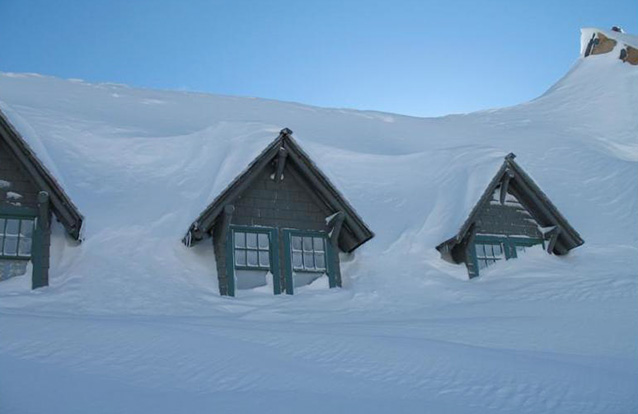
Many of us are in the process now, or will be soon, of shutting down buildings for the winter. In addition to turning the water off, the heat down or off, boarding windows, and all the other winterization duties, fire protection must be considered.
If a building will be vacant all winter, exposed to low temperatures, and possibly inaccessible:
- The fire protection equipment might need to be decommissioned to avoid damage.
- Fire sprinkler systems can be shut off, drained, and valves left open to prevent freezing.
- If using antifreeze to winterize a system, ensure that you are using the appropriate amount and concentration. Note: Antifreeze in higher concentrations can add to fire growth.
- Alarm systems can be shut down, and all batteries removed and placed in a heated building to prevent the need to replace batteries that are drained in the cold weather.
However, it's important to remember that without active alarm or suppression systems, these buildings will likely be lost should they catch fire. Make sure that:
- The monitoring company (park dispatch, private alarm monitoring company, etc.) is notified that the system is off-line.
- The appropriate fire department (outside agency, park engine company) is aware of the status of all protection systems to a building.
Fire Info for You
Firefighters: For firefighters on engine companies, know the status of protection systems in buildings in your response area and develop appropriate response tactics if they are not protected. For example, if you attempt to charge a fire department connection to a system that is shut down, will the sprinklers work? There's a chance that no water will make it to the fire, depending on the design of the system. Keep informed on when and if systems are coming back online in spring.
Park Leadership: Does your park have a structural fire management plan in place? Does it address seasonal closures and building opening procedures?
Once winter has passed, it's important to remember that the fire protection systems must be reactivated before the buildings are occupied again. Because all of our systems must be inspected and tested by a qualified technician yearly, coordinating this at the same time will ensure the safety of the building and occupants, keep within policy and law, and provide a cost savings for the park.
Consider using a private contractor to bring systems online at the same time they are conducting required annual inspections.
Employees helping reopen winterized buildings: If coordination with a qualified technician is not possible when first opening buildings, ensure that a knowledgeable employee who is familiar with the system oversees bringing it back online. Fire protection systems need to be recharged in a specific order. Restoring power or water connections in the wrong order can damage the whole system. Contact your park's facilities manager or regional structural fire manager for guidance.
Take Action
- If you are responsible for a building or you are involved with the winterization process, ensure that this process is completed properly, following the above guidelines. Note: When it comes time to reopen structures, ensure that it is done by a qualified contractor or knowledgeable employee.
- Is an ice-melting device (such as a heated cable placed on the roof or gutters) used on the structure? Are you using a heating device on piping? If so, ensure that the manufacturer's instructions are followed. A recent fire at one historical park highlighted the danger of these products. Read about it below in NPS Fire Facts.
- If you're unsure of what to do, contact your park's facilities manager or regional structural fire manager.
NPS Fire Facts
This August, a fire ignited on the roof of an NPS historic home. Heat from the fire tripped a heat detector located in the attic of the structure and activated the fire alarm and fire suppression systems. The fire department responded and arrived within a few minutes of the alarm and sprinkler activation. The building was saved.
The fire was caused by an electric de-icing cable placed on the roof. It was improperly installed and used.
Last updated: September 6, 2016
